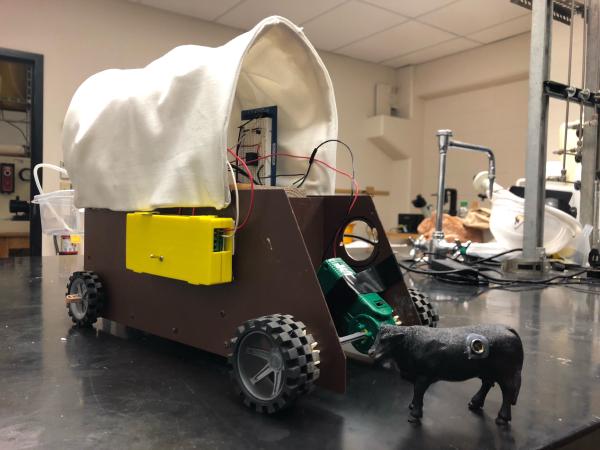Category: Thesis
Polyoxometalate clusters embedded into hydrogel biobeads may be able to solve
the challenges posed by free proton generation during remediation of
trichloroethylene by acting as buffers and reducing protons to hydrogen gas. In
this thesis, the challenges posed by systems that contain both diffusion and
reaction processes for protons are considered mathematically, and a computer
simulation to was developed to prove the relationship between diaphragm cell lag
period and reactive capabilities of …

The ChemE Car That Cud showcases Wyoming’s dominant industries of agriculture
and mining by utilizing rumen fluid from a cannulated beef cow to generate
hydrogen to be used in a hydrogen fuel cell and radioactive cesium, a byproduct
of uranium that is often obtained from Wyoming’s mines, to time the car’s stop.
The concentration of cesium-137 source is measured using the radioactive decay
of cesium shielded by aluminum. The painted aluminum chassis was obtained from a
previous …